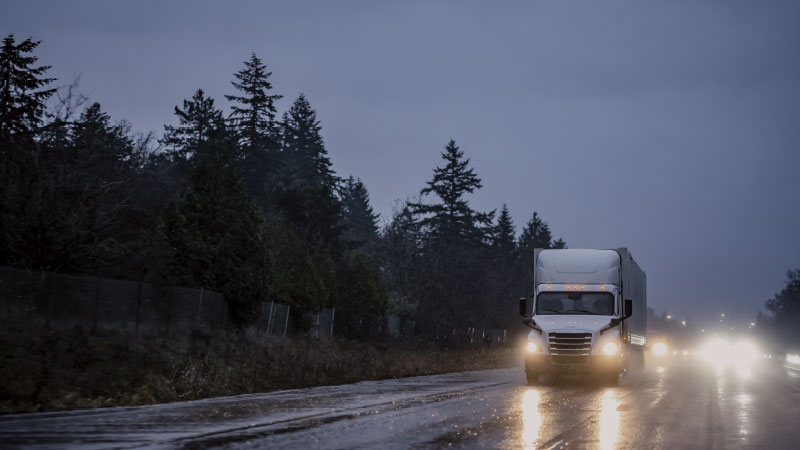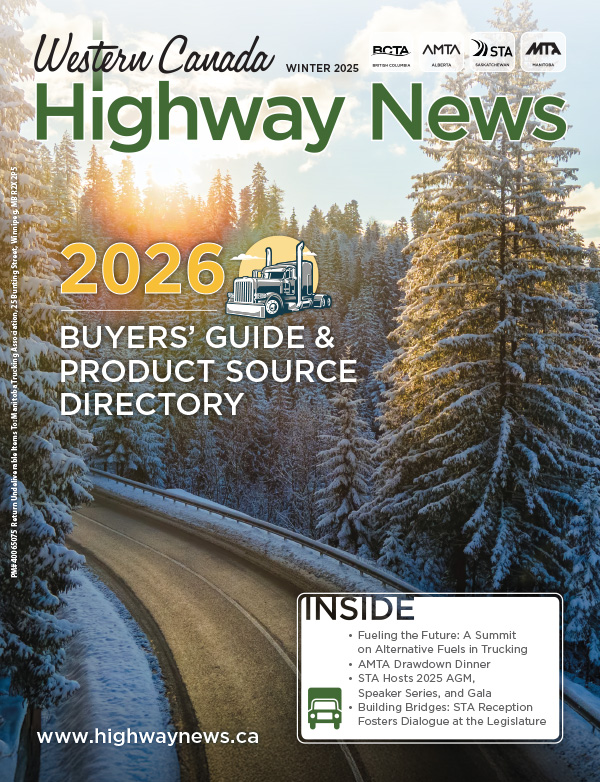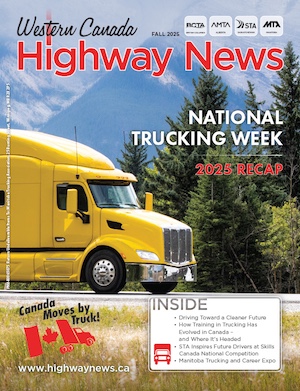Kelsey Hipkin, AMTA Staff Writer
Human trafficking survivor shares stories, statistics and the importance of having a safe place
Like many of us, Liz Williamson, 35, has been working from her home throughout the COVID-19 restrictions. Like many of us, she’ll prepare dinner and await her spouse’s return from work. But unlike many of us, Williamson, the Canadian Training Specialist with Truckers Against Trafficking (TAT), had a long journey to get to where she is today because she was a victim of human sex trafficking from the age of six to 23. The first perpetrator? Her own mother.
“There [are] common tactics of a trafficker. They usually use force, fraud or coercion, but it always begins with recruitment,” Williamson said over a video call from her home in California. “Recruitment can be friends, boyfriends, even family members. Like mine, where my mom was my recruiter; she was the one who brought me into the trafficking situation.”
Based in Colorado, TAT is a non-profit organization that, in addition to its advocacy and education efforts, trains truck drivers to recognize and report human trafficking. In February 2022, TAT joined the Alberta Motor Transport Association (AMTA) as one of its community engagement partners. AMTA partners with several associations and initiatives to raise awareness on causes and engagements in which the commercial transportation industry is positioned to aid.
The statistics of human trafficking are startling. Williamson shared statistics from the International Labour Organization stating there are over 40 million victims of human trafficking globally, and human trafficking is a $150 billion criminal activity. The Canada Human Trafficking Hotline states that trafficking can happen in Canada in urban, suburban, or rural areas, and Polaris notes that a victim may be forced to have sex up to 20 times a day. According to the Canadian Women’s Foundation, over 50% of trafficked women in Canada are Indigenous though they make up only 4% of the female population.
On February 22, 2007, Canada’s House of Commons unanimously declared condemnation of all forms of trafficking and slavery by proclaiming National Human Trafficking Awareness Day. Each year, this day “helps bring awareness to the magnitude of modern-day slavery in Canada and abroad and encourage Canadians to take steps to combat human trafficking.”
February 22, 2022, also marks the first day of the Commercial Vehicle Safety Alliance’s (CSA) Human Trafficking Awareness Initiative in Canada.
“It’s a new annual awareness and outreach effort to educate commercial motor vehicle drivers, motor carriers, law enforcement officers, and the general public about the crime of human trafficking, the signs to look for, and
what to do if you suspect someone is being trafficked,” said the CVSA website.
While vulnerable populations – undocumented, single-parent households, LGBTQ2IA+, and others – are frequently trafficked groups, Williamson said anyone could be affected by the sway of a trafficker.
“The victims don’t always know they’re victims,” Williamson explained. “They’re completely fooled by the trafficker. They think that ‘this is the way of life, that this is what love looks like,’ and one day, it’s just going to be the two of them living a happy life.”
She said victims are sometimes “quite young” (in 2018, Statistics Canada reported nearly three in ten victims were under the age of 18), while the average trafficker is male (the Edmonton Police Service cited that since 2009, 81% of traffickers are male). Williamson added that society could look at that [person] and see a happy teenager, maybe a young [person] paying for college and wonder why the victim doesn’t just run away.
“There’s so much manipulation that goes on that there are reasons [they don’t] ask for help, maybe because [they] don’t know [they’re a] victim to begin with.”
Because of the significant miles that commercial drivers cover across provinces and borders, they are uniquely positioned to spot suspicious activity that could be trafficking. TAT educates commercial drivers, helping them learn how to detect and help combat human trafficking. Courses and resources cover topics such as red flags to keep an eye out for, trafficking laws, a Driving Freedom podcast, opportunities to fight trafficking, and more.
TAT is one of several anti-trafficking groups. Founded in Alberta in 2017, #NotInMyCity (NIMC) is an organization that works to prevent, disrupt, and end sexual exploitation and trafficking in Alberta and beyond. AMTA was announced as a NIMC ally in March 2021.
“The AMTA is proud to be an Ally of #NotInMyCity and supports its ongoing efforts to end human trafficking,” said Chris Nash, AMTA President, in a March 2021 release. “Safety is at the core of our association, and that extends far beyond just commercial transportation; it includes the safety of all Albertans. As countless eyes and ears who are on the road every day, our members play an active role in raising awareness about this horrific issue and being a key part of the solution.”
NIMC offers a free interactive online course for AMTA members and the broader commercial transportation industry to learn about human trafficking in Canada. The course teaches how to recognize the signs of a potentially exploited person and how to help without putting the concerned individual at greater risk.
Although she is a survivor, Williamson will always carry the trauma of being a victim of trafficking. However, her experience drives her advocacy efforts to educate others about trafficking, break the stigma of its victims, and end the human trafficking crisis in Canada and the world.
“I want to stop other people from having to carry this weight,” she said. “I’m not always saying that I know the right way or the easy way, but I think it starts with ‘let’s talk about sex.’”
Williamson’s hope is to be a safe person for someone to share their truth and a safe place for someone experiencing duress or some form of violence.
“I think as a society, we have to wake up, and we have to figure out that our bodies aren’t commodities, that we aren’t just something to be used. Even in the legal sex industry, where you can get a massage ‘and all that,’ do those women really have a choice? Do those men really have a choice? To me, they don’t.”
For Williamson, her safe person was a commercial driver.
The night she left trafficking, she was in a t-shirt with bare feet, sitting at a bus stop, even though a bus wasn’t expected to arrive for quite some time. “When the bus driver pulled up, he said, ‘Ma’am, can I take you somewhere?’” Williamson remembered. “I thought he was a ‘John.’ I thought he was propositioning me, and I would have to sleep with him. I literally was like, ‘I don’t want to sleep with you.’” The bus driver suggested Williamson sit in the bus to warm up. “That was the power and importance of just being a kind human being,” she continued.
The driver asked Williamson if she was hungry, offering her a sandwich his wife had made. “I was so hungry – because a lot of times traffickers control food and water,” she said. “I hate olives, and there were olives on that sandwich, but let me tell you, it was the best sandwich ever.”
The bus driver dropped Williamson off at a homeless shelter, where she spent the next year or so “getting money together” and rebuilding her life.
“[The driver’s] name was Paul,” Williamson said. “Be a Paul; be someone who is just kind without anything to gain for yourself.”


 1-866-985-9791
1-866-985-9791



